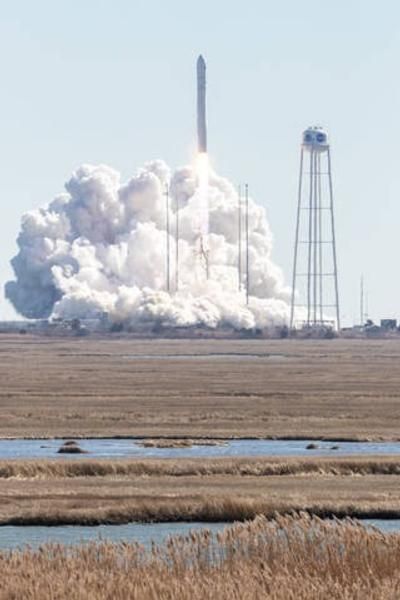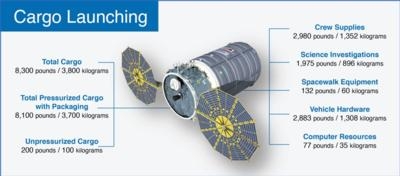Thu, Feb 24, 2022
Launch Delivers Projects, Supplies, and Experiments to Mission 66
Taking on the perceived dominance of SpaceX in taking on resupply missions for the International Space Station, Northrop Grumman successfully delivered an 8,300-pound supply run aboard a Cygnus spacecraft.

The delivery marks the 17th contracted mission under the company's Commercial Resupply Services contract. The Cygnus will remain at the station until May, when it will deploy CubeSats and drop thousands of pounds of garbage during re-entry for easy disposal.
Aboard the resupply mission, a number of scientific projects, equipment, and experiments were delivered alongside the regular day to day living and operational cargo needed to survive in orbit. The experiments will join more than 250 similar scientific efforts already in progress on the station during NASA's Expedition 66 mission.
Some of the banner projects include cell cultures to assess skin deterioration, aging, and the effects of microgravity on dermal cells over their lifetime. Colgate hopes that its Skin Aging program will "speed development of products aimed at protecting skin from the aging process on Earth." Another medical specialist, MicroQuin, has a similar project to analyze the effects of a therapy on breast and prostate cancer cells. The company has seen indications that the desired cells tend to grow into a more natural, effective 3-dimensional model while in microgravity, making it easier to analyze their workings and place in the greater human ecosystem at a microscopic level.

Other equipment projects include a space demonstrator for solid-state lithium ion batteries in zero gravity and an advanced hydrogen sensor system. Those parts will test for possible improvements to vital atmosphere sensors that currently require higher, constant replacement throughout the mission to ensure safety. Finally, a prototype, multi-fuel combustion tester to assess varying concentrations of oxygen and fuel pressures to improve the safety of future EVA suits, materials, and fire suppressors in space.
More News
He Attempted To Restart The Engine Three Times. On The Third Restart Attempt, He Noticed That Flames Were Coming Out From The Right Wing Near The Fuel Cap Analysis: The pilot repor>[...]
Make Sure You NEVER Miss A New Story From Aero-News Network Do you ever feel like you never see posts from a certain person or page on Facebook or Instagram? Here’s how you c>[...]
From 2009 (YouTube Edition): Leading Air Show Performers Give Their Best Advice for Newcomers On December 6th through December 9th, the Paris Las Vegas Hotel hosted over 1,500 air >[...]
Aero Linx: NASA ASRS ASRS captures confidential reports, analyzes the resulting aviation safety data, and disseminates vital information to the aviation community. The ASRS is an i>[...]
“For our inaugural Pylon Racing Seminar in Roswell, we were thrilled to certify 60 pilots across our six closed-course pylon race classes. Not only did this year’s PRS >[...]
 NTSB Final Report: Rutan Long-EZ
NTSB Final Report: Rutan Long-EZ ANN FAQ: Turn On Post Notifications
ANN FAQ: Turn On Post Notifications Classic Aero-TV: ICAS Perspectives - Advice for New Air Show Performers
Classic Aero-TV: ICAS Perspectives - Advice for New Air Show Performers ANN's Daily Aero-Linx (06.28.25)
ANN's Daily Aero-Linx (06.28.25) Aero-News: Quote of the Day (06.28.25)
Aero-News: Quote of the Day (06.28.25)




